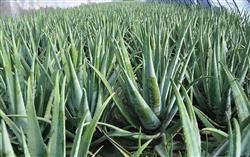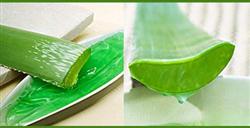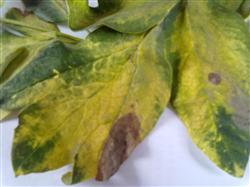Aloe breeding: how to control diseases and insect pests of edible aloe?

How to control diseases and insect pests of edible aloe? Please introduce the method of edible aloe vera in the prevention and control of diseases and insect pests should adopt scientific control measures, should vigorously promote pollution-free control technology, prohibit high-toxic and high-residue pesticides, not only effectively control the harm of diseases and insect pests, but also make the pesticide residues of the products do not exceed the standard. In the prevention and control, take "prevention first, comprehensive prevention and control" measures, timely early prevention. Planting edible aloe can refer to the following methods to control diseases and insect pests: first, agricultural prevention and control methods: before asparagus is harvested, the old mother stem is cleared on a sunny day before "the Beginning of Spring" and "the Beginning of Autumn" respectively, and a thorough garden cleaning is carried out to eliminate the sources of diseases and insect pests lurking in litter and soil. The clear garden should cut off the old mother stem and the new tender stem with deformities, diseases and insect pests, and move it out of the field and burn it centrally. At the same time, the herbicide was sprayed to remove the weeds in the field, and the sand was removed from the asparagus head. After 1-2 days of sun exposure, each 667m2 was drenched with 70% methyl thiophanate and 50% carbendazim 0.5Kg, phoxim 1Kg mixed with water 500-600Kg, and then covered with 5-6cm guest sand to eliminate the source of diseases and insect pests. Strengthen the management of fertilizer and water, increase the application of organic fertilizer, and pay attention to the reasonable collocation of nitrogen, phosphorus, potassium and trace elements. If the soil of bamboo shoot garden is slightly acidic, appropriate amount of lime powder can be applied to adjust soil acidity and alkalinity; pay attention to drought and drainage, promote plant growth and strengthen disease resistance; do not harvest too much to avoid premature senescence. 2. Chemical control method: chemical control should grasp the key period of control, control stem blight and other diseases at the initial stage of disease, protect the susceptible period from mother stem germination to maturity, and control pests from the peak of larval hatching to juvenile stage. After clearing the garden, the young stems began to spray to control stem blight as soon as they grew out, and the spraying should be persisted until the stems and leaves were aged. Agents should be used in rotation frequently, and do not use a single agent for a long time, so as not to produce drug resistance and affect the efficacy. 1. Mother stem growth period: appropriate selection of pesticides with high efficiency, low toxicity and low residue, such as Dasheng Mmur45 wettable powder or 65% Haoshengling wettable powder or 70% methyl thiophanate wettable powder or 50% carbendazim wettable powder, or 80% Shengsheng wettable powder 300 times, or 65% Sensen ammonium water solution 800-1000 times to control stem blight and brown spot. It is necessary to spray the 1st-2nd instar larvae to control insect pests. Control pests of Noctuidae with 1000-1500 times of Yitaibao EC, or 1000 times of 10% cypermethrin EC plus a small amount of dimethoate or 2.5% deltamethrin EC mixed with 3000 times of trichlorfon or hit 3000 times: control aphids and thrips with 1000 times of 10% Maxiong or 1500-2000 times of imidacloprid wettable powder The occurrence of mites and red spiders can be prevented by spraying 1000 times of mites EC. 2. Harvest time: biological control should be carried out. Biological agents such as 1000-fold solution of 12% Dianlikang or 1000-fold solution of Kexikang can be used to control stem blight; 1000-fold liquid of Beauveria bassiana or Bacillus thuringiensis or 1500-fold liquid of rice were used to control pests of Spodoptera litura and other moth pests; avermectin biological pesticides were used to control aphids and thrips. Sugar and vinegar solution (3 parts of sugar, 3 parts of vinegar, 1 part of wine, 10 parts of water plus 0.1% of trichlorfon) can be used to trap and kill adults in the field in the evening. Click to get more aloe culture techniques click to get more flower planting techniques
- Prev

Aloe culture: cultivation techniques of aloe in greenhouse
Aloe, also known as oil onion, is a plant of the genus Aloe of Liliaceae, which is native to India. The edible varieties of aloe are Curacao, Muli, China and so on. The main varieties cultivated in the local greenhouse are Curacao, alias Barbados aloe and emerald leaf aloe. The botanical characteristics and cultivation points of aloe are introduced as follows: aloe.
- Next

How to raise peonies: what is peony seedling blight?
What is peony seedling blight? What harm does peony seedling blight have? Is there any way to prevent and cure it? Please also introduce the harm of peony seedling blight: the disease is distributed in the south and north and occurs in the seedling stage. This fungus has a wide host range and can harm the seedlings of more than 100 kinds of plants.
Related
- Fuxing push coffee new agricultural production and marketing class: lack of small-scale processing plants
- Jujube rice field leisure farm deep ploughing Yilan for five years to create a space for organic food and play
- Nongyu Farm-A trial of organic papaya for brave women with advanced technology
- Four points for attention in the prevention and control of diseases and insect pests of edible fungi
- How to add nutrient solution to Edible Fungi
- Is there any good way to control edible fungus mites?
- Open Inoculation Technology of Edible Fungi
- Is there any clever way to use fertilizer for edible fungus in winter?
- What agents are used to kill the pathogens of edible fungi in the mushroom shed?
- Rapid drying of Edible Fungi

